GEOGRAPHIC EXTREMES SOCIETY
AUSTRALIAN RECORDS
Mammals
Australia is the only continent home to the three extant groups of mammals – the monotremes (or egg laying mammals), marsupials (the pouched mammals) and placentals (what most people think of as normal mammals). Even though both Indonesia and Papua New Guinea also share these three groups it is Australia where diversity of mammals reaches its highest point.
Largest Australian Mammal
The southern blue whale is the largest animal to have ever lived, and two subspecies are known to inhabit Australian waters. The longest and largest subspecies belong to the Southern Ocean groups where a record specimen was killed off South Georgia in the Atlantic Ocean. This female blue whale measured 33.6 metres and weighing approximately 135 tonnes. Recent studies have cast doubt on the record; due to the exorbitant metabolic rate needed to maintain an individual this size. Blue whales are also endowed with the largest penis in the animal kingdom, with estimates that an erect penis would be over three metres long and weigh several tonnes when engorged. That’s pretty startling but is put into perspective when we find out that a blue whale’s tongue weighs 2.7 tonnes.
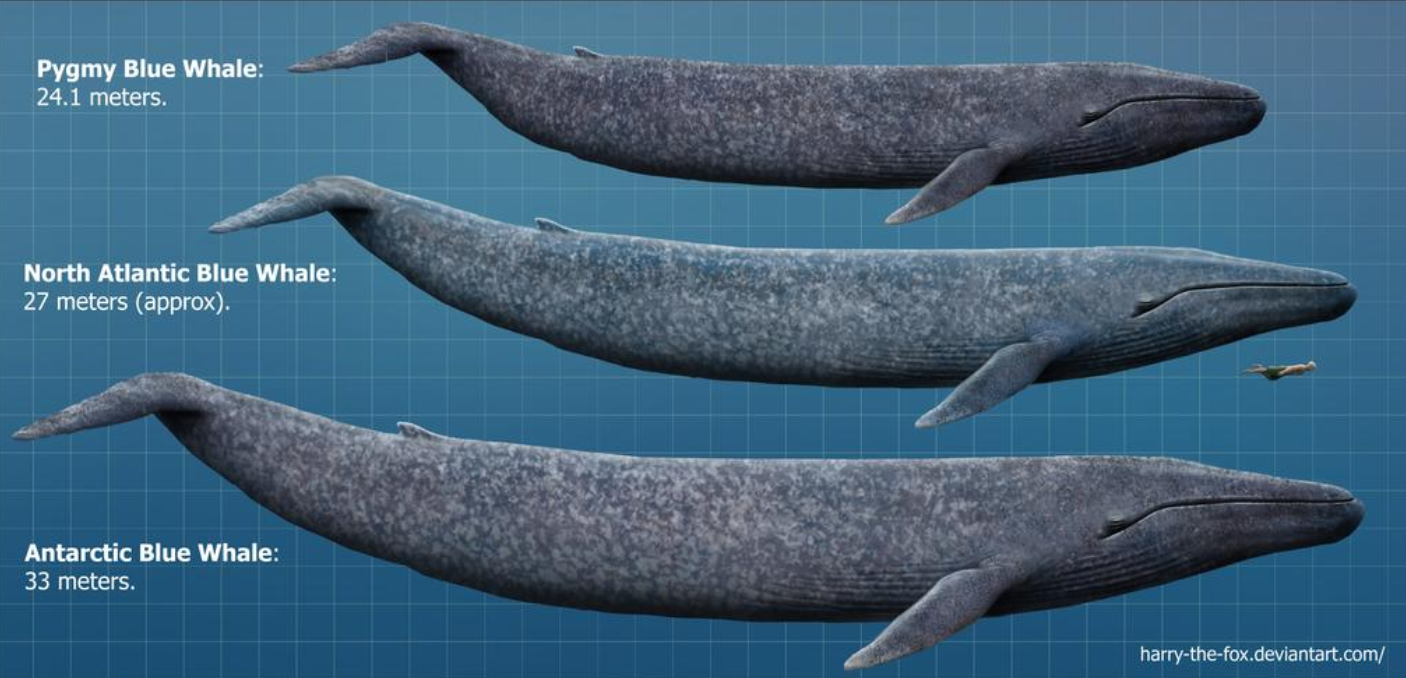
Blue Whale. Largest Australian animal. Image: Deviant Art
Largest Mammal to give birth on Australian soil
The largest land mammals are the huge bull males of the southern elephant seal, known as beachmasters. In fact, it tops the list by quite a margin. The largest of the beachmaster males come ashore in Macquarie Island and Heard Island, weighing in at nearly four tonnes.
Southern elephant seals were once breeding residents of Tasmania until humans arrived over 40,000 years ago. Evicted from Tasmanian beaches after human predation, these giants were forced to more remote islands. After the last ice age, Southern elephant seals reclaimed King Island in Bass Strait after the local human population became extinct. When European Australians arrived on King Island in 1802, the sealing industry followed hot on their heels. The rendered-down oils from the southern elephant seal became modern Australia’s first export industry, and by 1805 these animals became extinct on King Island. These seals infrequently come ashore on mainland Tasmania. Still, it’s looking more likely that Maatsuyker Island, just to the south of Tasmania, will become a breeding area for these southern elephant seals once again.
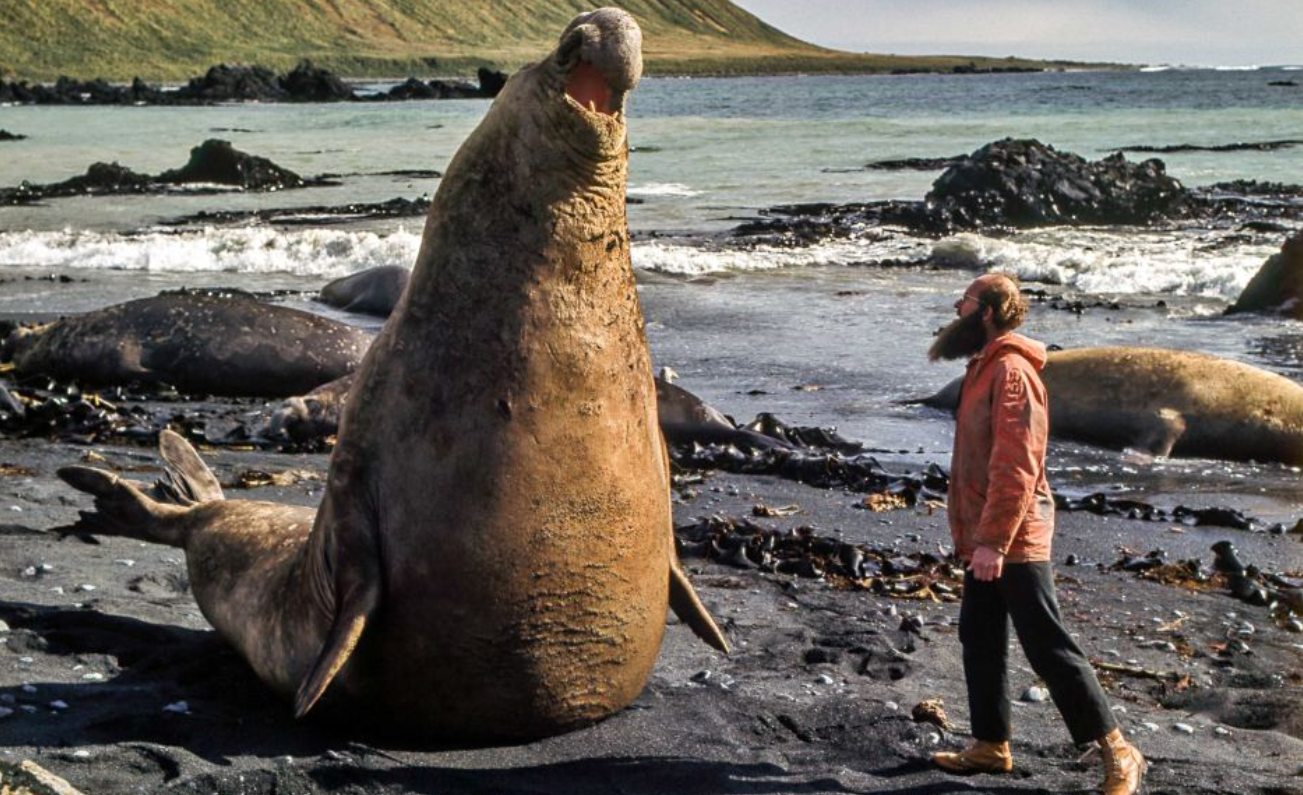
Southern elephant seal. Australia’s largest land animal. Image: ABC
Largest exclusive land mammal
Australia’s largest true land animals are currently all introduced species. Number one on the list is the Asian swamp buffalo, or water buffalo as it’s known in Australia, with the largest known specimen weighing in at around 1,200kg. Following this, we have wild camel, feral cattle, Balinese banteng cattle, and wild brumbies all weighing between 500kg and 800kg.
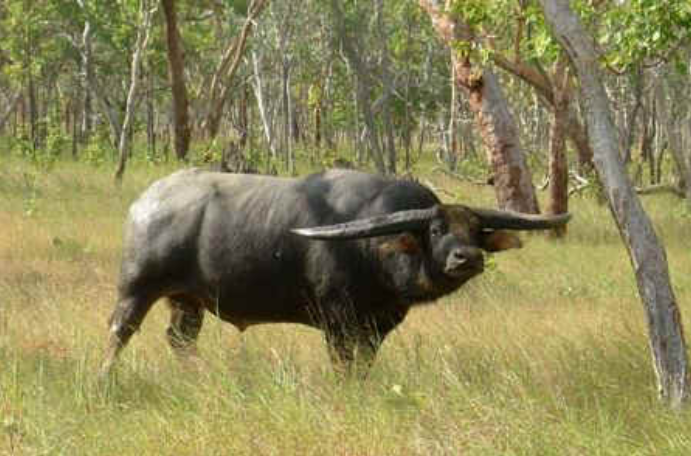
Water Buffalo. Australia’s largest land animal. Image: Graham Williams
Monotremes
Monotremes, the egg-laying mammals, are restricted to Australia and New Guinea. The largest of all monotremes are the western long-beaked echidna from the Vogelkop Peninsula in New Guinea, weighing in at a massive 16.5 kilograms. All of Australia’s long-beaked echidnas died off during the megafaunal extinction around 50,000 years ago. It now leaves the short-beaked echidna as Australia’s largest monotreme, weighing up to seven kilograms. In Tasmania, the smallest and hairiest of the echidna sub-species can be found.

Tasmania Echidna. Smallest and hairiest subspecies. Image: David Hamilton
I find it interesting that the largest of Australia’s platypus live in rivers on the western side of the Great Divide, that flow into the Murray-Darling River system, and not in more frigid Tasmanian rivers.
Marsupials
Many visitors to Australia ask the age-old question, “What’s the difference between kangaroos and wallabies?” Primarily, it comes down to size. Anything under twenty kilograms usually gets labelled a wallaby, anything larger a kangaroo, but a note of caution here. This guideline certainly doesn’t apply to all macropods. Of the many species of tree kangaroos, only a few weigh over twenty kilograms, while some large agile wallabies have been weighed up to thirty kilograms. It is still a mystery to many where the different species of Wallaroo fit into this scheme of things.
It’s well-known that the red kangaroo is the world’s largest living marsupial. Large males can weigh ninety kilograms or even more, although I haven’t been able to find any evidence of a red kangaroo breaking the magic 100-kilogram mark.
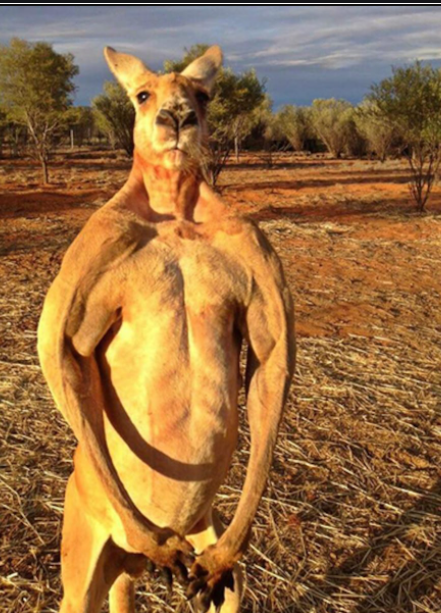
Roger, the Red Kangaroo. Largest Australian native Mammal. Image: Chris Barnes
The smallest kangaroo has been for years touted as the musky rat kangaroo, and this remains so in Australia. Still, recently ecologists found a tiny dorcopsis wallaby in New Guinea that looks to be the smallest member of the macropod group weighing in at a tiny 500 grams.
Australia has a fantastic variety of possums, but the greatest diversity comes from New Guinea to the north. Disregarding the distantly-related opossums of the Americas, the largest possum is the bear cuscus from Sulawesi in Indonesia, weighing in at around ten kilograms. Australia’s largest possum is the spotted cuscus weighing in at just half the size at five kilograms. Australia’s cuscus are outliers of New Guinea species, confined to eating fruit in tropical rainforests on Cape York Peninsula. Our smallest possum is the little pygmy-possum that’s almost 1,000 times smaller at just seven grams.

Spotted Cuscus. Australia’s largest possum. Image: Jun Matsui
No large predatorial marsupials survive in Australia. On September 7, 1936, the last known Tasmanian tiger died in Hobart’s Beaumaris Zoo. On that day, a 23-million-year history of marsupial wolf-like animals also disappeared from Australia [13]. Thylacines had already been usurped from the mainland of Australia by their smaller placental mammal counterpart, the dingo. It was despite the average thylacine weighing thirty kilograms, being half as big again as the dingo who tips the scales at only twenty kilograms. It appears the dingo was a far superior predator, had larger litter sizes, and exceptional skills to compete with similar species. A prowess learned and brought with them to Australia, from the carnivore-packed Asian landmass.
The Tasmanian devil now remains as the largest marsupial carnivore in the world, weighing around nine kilograms. The civet-like, spotted-tailed quoll is the next biggest at six kilograms. The Tasmanian devil and spotted-tailed quoll are said to have the largest and second-largest bite strength of any mammal in the world, relative to body size.
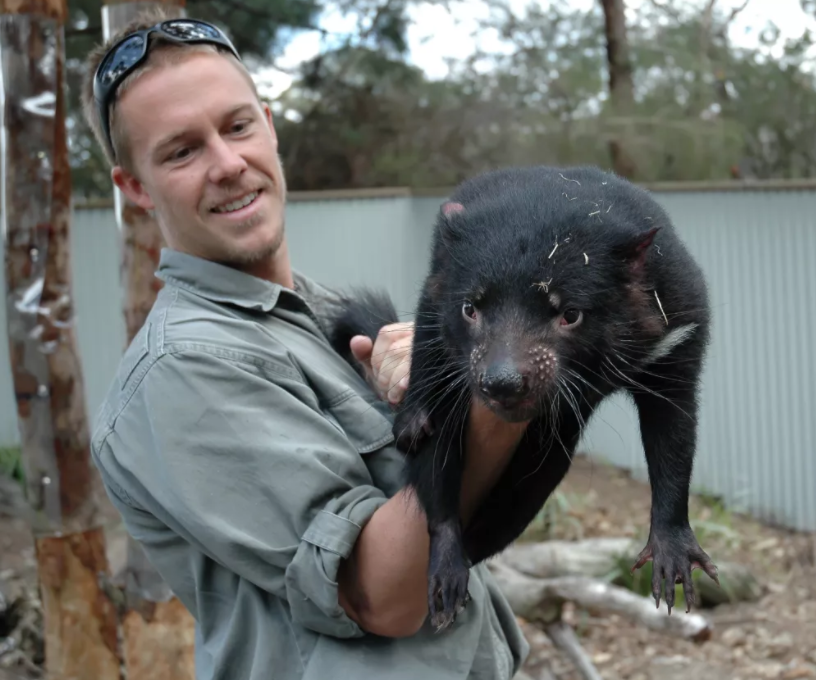
Tim Faulkner and Tasmanian devil. Largest Australian marsupial carnivore. Image: Stephan Schuster
The smallest of Australia’s marsupials, the carnivorous, long-tailed planigale, is one of the world’s smallest mammals. This tiny creature weighs in at only four to six grams, about a quarter the size of a house mouse, yet it punches well above its weight, preying on lizards and arthropods two to three times its size. Rounding off the list of Australian carnivorous marsupials is the greater bilby, our largest bandicoot and the only bandicoot to burrow into the ground. The largest males of the greater bilby are 2.5 kilograms, but these carnivores are dwarfed by the giant bandicoot from New Guinea, which has records of over five kilograms in weight.

Long-tailed Planigale. Smallest Marsupial. Image: Rustedbones
The family of marsupials to which wombats belong, that once gave us the largest of all the Australian mammals, are reduced to just three living wombat species and the lone koala species. The northern hairy-nosed wombat is the largest species on mainland Australia, but in line with Bergmann’s Rule, the common wombats living in Tasmania can surpass their northern cousins and reach up to 40kg.
Placental Mammals
The bats are the most populous group of mammals in Australia. There are seventy-eight species in total, eleven species belonging to the larger-sized, fruit bats group and sixty-seven species belong to the primarily insectivorous micro-bats. The fruit bats range in size from the one kilogram, grey-headed flying-fox, down to the tiny northern blossom bat, which is one hundred times smaller at just ten grams. The largest of the micro-bats is the carnivorous ghost bat where the maximum weight known is 145 grams. The ghost bat probably feeds on the smallest of Australian bats, the northern cave bat, which can weigh as little as 2.3 grams.

Ghost Bat. Largest Australian bat species. Image: Alcheron
Rodents are the next most populous group of mammals in Australia with sixty-seven species recorded in Australia. Eleven of these rodent species are now extinct, including the lesser stick-nest rat, five species of hopping mice, and the afore-mentioned Bramble Cay melomys. The largest of all native Australian rodents is the rakali, or water rat, which can weigh 1.2 kilograms. In contrast, the delicate mouse found across coastal northern Australia is as little as six grams.

Rakali or Water Rat. Australia’s largest rodent. Image: Peter Weinstock
The cetacean group of whales and dolphins have many representatives in Australian waters. They range in size from the baleen giants like the blue whale, fin whale, and the southern right whale, each of which can weigh over eighty tonnes. The cetaceans also include the world’s largest predator, by a wide margin, the sperm whale. These enormous predators can dive to depths of 3,000 metres. Only Cuvier’s beaked whale is known to have dived deeper. Sperm whales utilise the animal kingdom’s most complex echolocation technique to catch giant squid and deep-sea fish. They also make the loudest noises, have the largest animal brains, and possess the longest intestinal tracts.
the smallest of the Australian cetaceans, the dusky dolphin, is 2,000 times smaller. This forty-kilogram dolphin is infrequently spotted off Tasmania and Kangaroo Island.
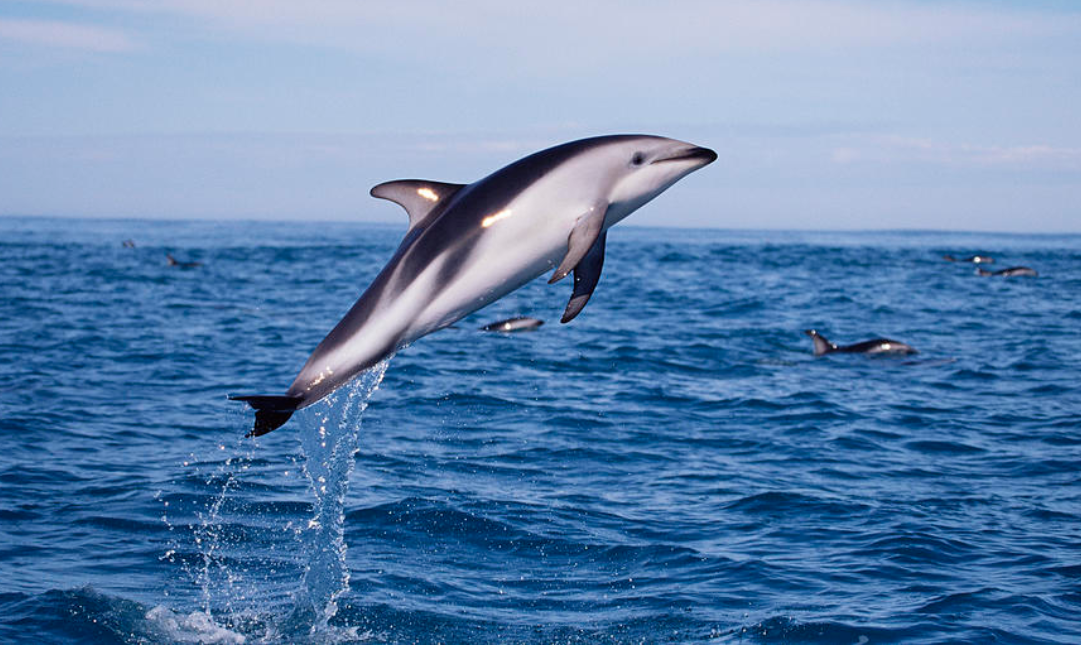
Dusky dolphin. Smallest Australian cetacean. Image: vedantsblog
Mammal records
GES Record: Largest Australian Mammal. Southern Ocean Blue Whale. Balaenoptera musculus. 33 metres. (Source: International Whaling Commission)
GES Record: Largest Australian mammal to be born on Australian soil. Southern elephant seal. Mirounga leonine 4000 kilograms (Source: Melbourne Museum)
GES Record: Largest land dwelling Australian mammal. Asian Swamp Buffalo. Bubalus bubalis 1,200 kilograms. (Source: Australian Museum)
GES Record: Largest Marsupial. Red Kangaroo. Macropus rufus. To 90 kilograms (Source: Chris Barnes)
GES Record: Smallest Marsupial. Long-tailed planigale. Planigale ingrami. 4 grams (Source: P Monkhurst 2011)
GES Record: Largest Australian possum species. Spotted cuscus. Spilocuscus maculatus. To 6 kilograms. (Source: Grzimek,1990)
GES Record: Largest Marsupial Carnivore. Tasmanian devil. Sarcophilus harrisi 9 kilograms (Source: P Monkhurst 2011)
GES Record: Largest Australian bat. Grey-headed flying fox. Pteropus poliocephalus 1 kilogram. (Source: P Monkhurst 2011)
GES Record: Smallest Australian bat. Northern cave bat. Vespadelus caurinus 2 grams. (Source: P Monkhurst 2011)
GES Record: Largest Australian rodent. Rakali. Hydromys chrysogaster. 1200 grams. (Source: P Monkhurst 2011)
GES Record: Smallest Australian dolphin species. Dusky dolphin. Lagenorhynchus obscurus. 40 kilograms. (Source: P Monkhurst 2011)
The Geographic Extremes Society welcomes any input as to the veracity of these records and we encourage everyone to contribute to these extreme records by contacting us to initiate the discussion
